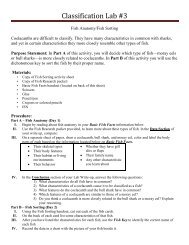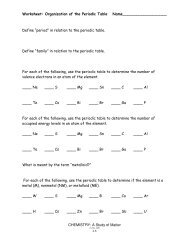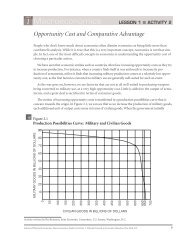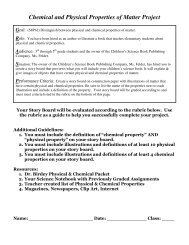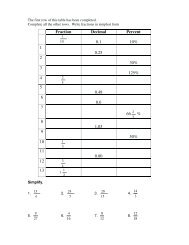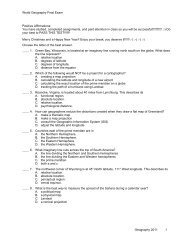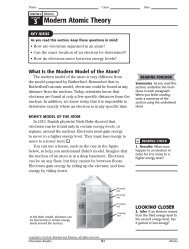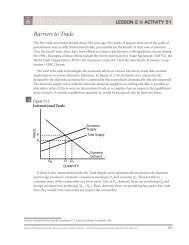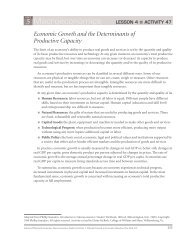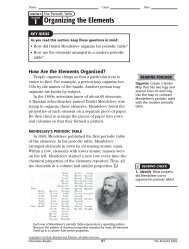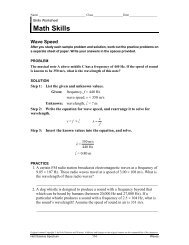Notes on Biogeochemical Cycles and Ecology.pdf
Notes on Biogeochemical Cycles and Ecology.pdf
Notes on Biogeochemical Cycles and Ecology.pdf
You also want an ePaper? Increase the reach of your titles
YUMPU automatically turns print PDFs into web optimized ePapers that Google loves.
amino acids. The other form of nitrogen fixati<strong>on</strong> is by nitrogen fixing bacteria, whouse special enzymes instead of the extreme amount of energy found in lightning to fixnitrogen. These nitrogen-fixing bacteria come in three forms: some are free-living inthe soil; some form symbiotic, mutualistic associati<strong>on</strong>s with the roots of bean plants<strong>and</strong> other legumes (rhizobial bacteria); <strong>and</strong> the third form of nitrogen-fixing bacteriaare the photosynthetic cyanobacteria (blue-green algae) which are found mostcomm<strong>on</strong>ly in water. All of these fix nitrogen, either in the form of nitrate or in theform of amm<strong>on</strong>ia (nitrogen with 3 hydrogens attached). Most plants can take upnitrate <strong>and</strong> c<strong>on</strong>vert it to amino acids. Animals acquire all of their amino acids whenthey eat plants (or other animals). When plants or animals die (or release waste) thenitrogen is returned to the soil. The usual form of nitrogen returned to the soil inanimal wastes or in the output of the decomposers, is amm<strong>on</strong>ia. Amm<strong>on</strong>ia is rathertoxic, but, fortunately there are nitrite bacteria in the soil <strong>and</strong> in the water which takeup amm<strong>on</strong>ia <strong>and</strong> c<strong>on</strong>vert it to nitrite, which is nitrogen with two oxygens. Nitrite isalso somewhat toxic, but another type of bacteria, nitrate bacteria, take nitrite <strong>and</strong>c<strong>on</strong>vert it to nitrate, which can be taken up by plants to c<strong>on</strong>tinue the cycle. We nowhave a cycle set up in the soil (or water), but what returns nitrogen to the air? It turnsout that there are denitrifying bacteria which take the nitrate <strong>and</strong> combine the nitrogenback into nitrogen gas.The nitrogen cycle has some important practical c<strong>on</strong>siderati<strong>on</strong>s, as any<strong>on</strong>e who hasever set up a saltwater fish tank has found out. It takes several weeks to set up such atank, because you must have sufficient numbers of nitrite <strong>and</strong> nitrate bacteria presentto detoxify the amm<strong>on</strong>ia produced by the fish <strong>and</strong> decomposers in the tank.Otherwise, the amm<strong>on</strong>ia levels in the tank will build up <strong>and</strong> kill the fish. This isusually not a problem in freshwater tanks for two reas<strong>on</strong>s. One, the pH in a freshwatertank is at a different level than in a saltwater tank. At the pH of a freshwater tank,amm<strong>on</strong>ia is not as toxic. Sec<strong>on</strong>d, there are more multicellular plant forms that cangrow in freshwater, <strong>and</strong> these plants remove the amm<strong>on</strong>ia from the water veryefficiently. It is hard to get enough plants growing in a saltwater tank to detoxify thewater in the same way.The Phosphorous Cycle.




